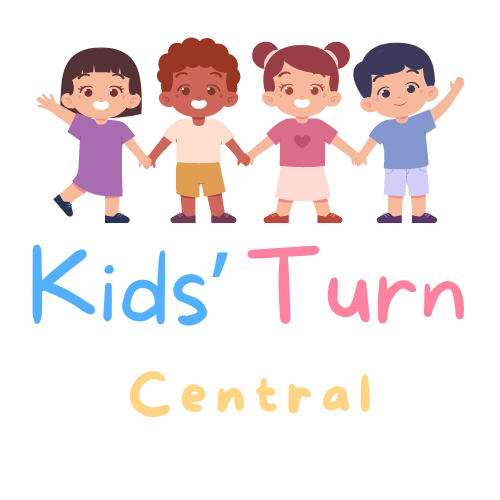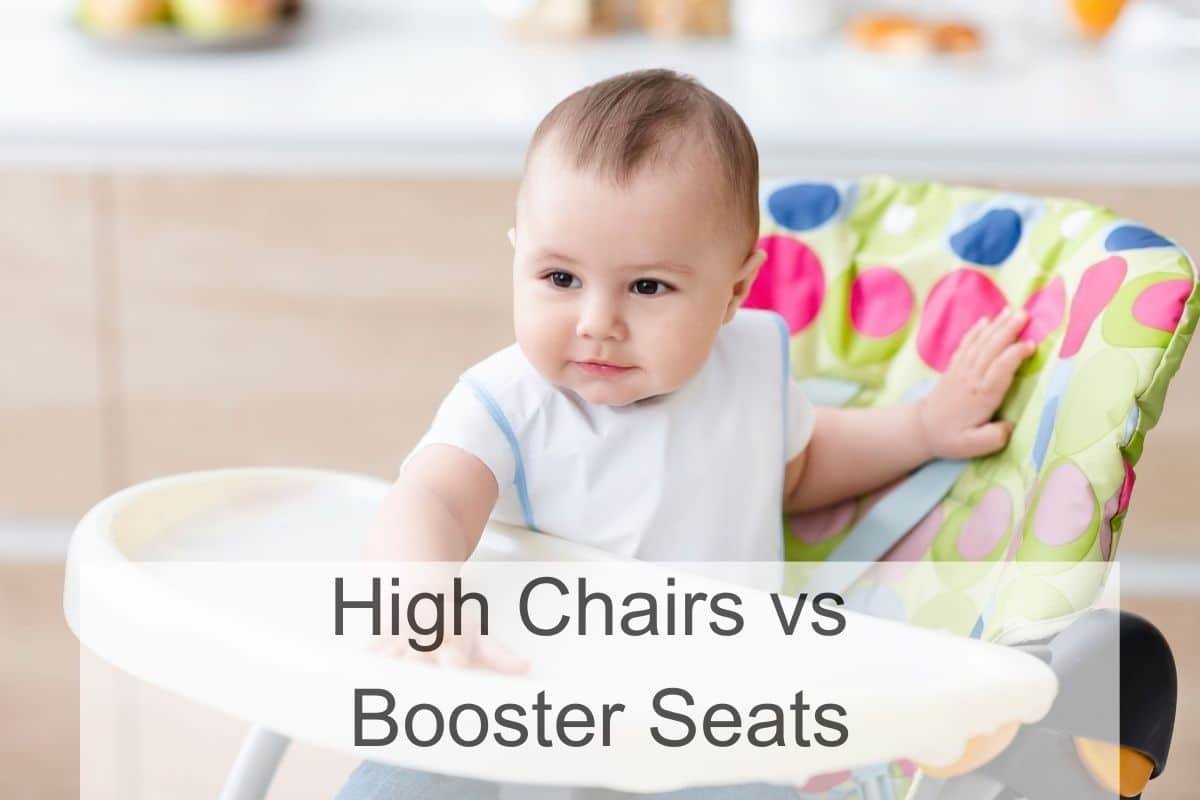As a parent, I know how overwhelming it can be to choose the right gear for your little one. One of the biggest decisions you’ll make is whether to use a high chair or a booster seat. These two types of seats serve the same purpose: to help your child sit at the table for meals. However, they have different features and are suitable for different ages and stages.

High chairs are typically larger and have more features than booster seats. They usually have a tray, a footrest, and a multi-point harness to keep your baby secure. Some high chairs can recline, making them suitable for younger babies who can’t sit up on their own. Booster seats, on the other hand, are smaller and more portable. They can be strapped onto a regular chair and often come with a removable tray. Booster seats are a great option for toddlers who are ready to sit at the table but still need a little extra support.
Understanding High Chairs

As a parent, I know how important it is to choose the right high chair for your little one. High chairs are designed to keep babies and toddlers safe and secure while they eat, and they come in a variety of styles to fit different needs. In this section, I will provide an overview of high chairs and their features to help you make an informed decision.
Types of High Chairs
High chairs come in different types, including traditional, modern, and convertible. Traditional high chairs are standalone chairs with legs and a tray, while modern high chairs are designed to be more compact and portable. Convertible high chairs can be transformed into booster seats or toddler chairs as your child grows.
Safety Features
Safety is a top priority when it comes to high chairs. Look for models with a sturdy base and a harness system to keep your child securely in place. Some high chairs also have a five-point harness system, which is the safest option. Make sure the tray is easy to remove and clean, and that the chair has a wide base to prevent tipping.
Adjustability and Comfort
High chairs should be adjustable to accommodate your growing child. Look for models with adjustable height and recline positions, as well as adjustable footrests and tray positions. Padded seats and backrests can provide extra comfort for your little one during mealtime.
Materials and Durability
High chairs are made from a variety of materials, including plastic, metal, and wood. Consider the durability and ease of cleaning when choosing a high chair. Plastic high chairs are easy to clean, while wooden high chairs are more durable and have a classic look.
Exploring Booster Seats

When it comes to feeding your little one, booster seats can be a great option. They are smaller and more portable than high chairs, making them perfect for families on the go. In this section, I will explore the different types of booster seats, safety considerations, portability and space-saving features, and ease of cleaning.
Types of Booster Seats
There are two main types of booster seats: backless and high-back. Backless booster seats are simple, affordable, and easy to move around. They are suitable for older children who can sit up straight and do not need as much support. On the other hand, high-back booster seats have a backrest and provide more support and protection for your child’s head and neck. They are also more comfortable for younger children who may need extra support.
Booster Seat Safety
When it comes to booster seat safety, there are a few things to keep in mind. First, make sure your booster seat is properly installed and secured to the chair. Second, ensure that your child is securely strapped in with the seat belt or harness. Lastly, always supervise your child while they are in the booster seat to prevent any accidents.
Portability and Space Saving
One of the biggest advantages of booster seats is their portability and space-saving features. They are perfect for families who are always on the go or those who have limited space in their homes. Some booster seats are designed to fold flat for easy storage and transportation, while others have a compact design that can fit in small spaces.
Ease of Cleaning
Another advantage of booster seats is their ease of cleaning. Many booster seats have a removable tray that can be washed in the dishwasher, making mealtime cleanup a breeze. Additionally, most booster seats have a wipeable surface that can be easily cleaned with a damp cloth.
Age and Development Considerations

When it comes to choosing between high chairs and booster seats, it’s important to consider your child’s age and development stage.
Appropriate Age for High Chairs
High chairs are generally suitable for infants between the ages of 4 and 6 months, when they can sit upright with support. Most high chairs have adjustable features that allow you to modify the height and recline angle as your child grows. However, once your child is able to climb out of the high chair, it’s time to transition to a booster seat.
Transitioning to Booster Seats
Booster seats are designed for toddlers and older children who have outgrown their high chairs. The appropriate age for transitioning to a booster seat varies, but most children are ready around the age of 2 or 3. When selecting a booster seat, make sure it’s appropriate for your child’s weight and height, and that it can be securely attached to a sturdy chair.
Impact on Child’s Posture
It’s important to consider the impact of high chairs and booster seats on your child’s posture. High chairs often have a reclined seat and extra padding, which can encourage a slouched posture. On the other hand, booster seats require your child to sit up straight and engage their core muscles to maintain proper posture. To promote good posture, consider using a booster seat with a backrest and adjustable footrest.
High Chairs and Booster Seats in Different Settings

At Home Use
When it comes to feeding my child at home, I prefer using a high chair. High chairs are usually more sturdy and have a larger tray, which provides more space for food and toys. They also have a higher backrest, which can provide more support for younger children who are still learning to sit up. Additionally, high chairs can be adjusted to different heights, making it easier for me to feed my child at the same level as our dining table.
Restaurant and Travel Use
When I’m on the go, I prefer using a booster seat. Booster seats are smaller and more portable than high chairs, making them a great option for eating out or traveling. They can be easily attached to any chair, which means I don’t have to worry about finding a restaurant with high chairs. Booster seats are also more compact and lightweight, which makes them easier to carry around.
Price and Affordability
When it comes to purchasing a high chair or a booster seat, price and affordability are important factors to consider. In this section, I will compare the cost of high chairs and booster seats and explore their long-term value.
Cost Comparison
High chairs tend to be more expensive than booster seats. According to Rockinbaby.com, high chairs can cost over $150, while booster seats typically cost around $50. However, it is important to note that prices can vary depending on the brand, features, and materials.
While booster seats may seem like the more affordable option, it is important to consider the long-term value of your purchase.
Long-Term Value
High chairs can have a longer lifespan than booster seats. As MadeForMums notes, high chairs are sturdier and more robust, making them a better choice for everyday use. They can also be used from an earlier age than booster seats and often come with a 5-point harness, making them a safer option.
Booster seats, on the other hand, are often more portable and can be used as your child grows. However, they may not be as comfortable or supportive as high chairs. Additionally, some booster seats can only be used for a limited time, depending on your child’s size and weight.
User Reviews and Ratings
Parental Feedback
As a parent, I know how important it is to have the right equipment for my baby. When it comes to high chairs and booster seats, I have found that many parents prefer high chairs for younger babies, while booster seats are more suitable for older children. In my experience, high chairs are more comfortable for babies, as they offer more support and protection. They also tend to be more adjustable, which is important as babies grow and develop.
On the other hand, booster seats are more convenient for parents as they are smaller and easier to move around. They are also more affordable and take up less space. Some parents also prefer booster seats because they can be used for a longer period of time, from toddlerhood to early childhood. However, it is important to note that booster seats do not offer as much support or protection as high chairs, and they may not be suitable for very young babies.
Expert Opinions
According to experts in child development and safety, both high chairs and booster seats have their advantages and disadvantages. High chairs are generally considered to be safer and more comfortable for babies, as they offer more support and protection. They also tend to be more adjustable and can be used for a longer period of time. However, they can be more expensive and take up more space.
Booster seats, on the other hand, are more convenient and affordable, and they are suitable for older children who no longer need as much support. However, they are not as safe or comfortable as high chairs, and they may not be suitable for very young babies. Experts recommend that parents choose a high chair or booster seat based on the age and development of their child, as well as their own lifestyle and budget.
Making the Right Choice
When deciding between a high chair and a booster seat, there are a few factors to consider. Here are some things to keep in mind:
Lifestyle Considerations
Think about your family’s lifestyle. If you frequently eat out or travel, a portable booster seat may be a better choice. If you have a dedicated eating space at home, a high chair may be more practical. Additionally, if you have a small living space, a booster seat may be a better option as it takes up less space.
Space Constraints
Consider the amount of space you have in your home. A high chair can take up a lot of space, especially if it cannot be folded or easily stored away. A booster seat, on the other hand, takes up less space and can be easily stored when not in use.
Child’s Preference
Finally, consider your child’s preference. Some children may feel more secure and comfortable in a high chair, while others may prefer the independence of a booster seat. If your child is old enough to express a preference, take their opinion into account when making your decision.

